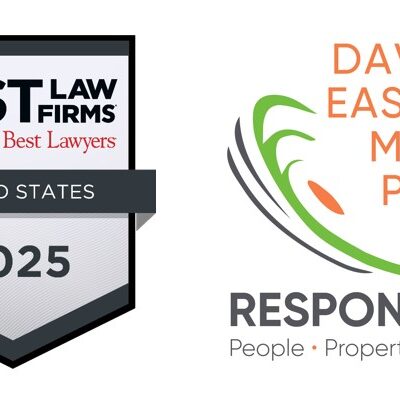Davison, Eastman & Muñoz, P.A. is once again establishing itself as a leader in cutting-edge cybersecurity, legal productivity process improvement, workflow streamlining, and collaboration among law firms with its launch of a technology overhaul that has been over two years in the making.
“It gives us the opportunity to spend less time on the mundane and more time on the creative,” said Matthew K. Blaine, Esq. who was promoted to partner in August and chairs the firm’s Technology and Innovation Committee. “Instead of waiting for problems to arise, we have implemented a system that significantly limits them and adapts to the exponential growth of electronic data. This gives all of us time to do our jobs well and fosters a collaborative environment that stretches across every department.”
The firm’s leadership and technology team embraced a collaborative philosophy of creating a long-term, building-block approach to developing its information technology infrastructure from the ground up, like a Lego set on interlocking pieces. Led by a diverse team of attorneys, employees, and technologists, the firm collectively developed and implemented a number of projects that enabled improved efficiencies, security, and productivity for itself and its clients.
At the head of this team is the firm’s Technology Director, Jim Petrozelli. “After a year and a half of research, design, and staff training, it’s exciting to see this project come to fruition. In the area of technology, it’s rewarding to implement a venture that is on the cutting-edge in this field, but, more importantly, it lends a sense of satisfaction and security knowing this new network provides not only protection, but an overall higher level of efficiency for all of the firm’s needs.”
The firm also engaged the services of Ann Gorr, a legal technology consultant based out of central New Jersey, who helped it to design a legal technology design/roadmap and align itself with outside technology partners that met the firm’s innovative needs and adhered to the unique information governance and stringent compliance mandates encountered by the legal community.
Project planning and the team selection process began in early 2015. In mid-2015, the firm launched Phase I of its three-phased approach when, focusing on work continuity, it implemented Office 365, redesigned its infrastructure to increase speed while also boosting on- and -off-campus storage, implemented backup email continuity and enhanced spam-filtering solutions, and rolled out a much-improved business continuity and disaster recovery system. The firm’s partner here was Adaptive Solutions (www.adaptivesolutions.com), a leading provider of IT system design and consulting services in the legal industry. “It was a true pleasure working with the firm on this project,” said Chuck Davis, president and CEO; “They are clearly committed to the alignment of business and technology, in order to provide market leading legal services to their client-base.”
In Phase II, the company replaced all computers and upgraded software to Windows 10, Office 2016 and the Microsoft Suite. The firm also partnered with Chicago-based Microsystems whose legal productivity suite enhances the overall efficiency of the attorney and support staff by drastically mitigating risk and eliminating potentially damaging ambiguities and inconsistent legal references that often exist in contracts, email communications, and other legal documentation. In addition to using Microsystems’ document-processing solutions to help proofread documents, fine tune their details, and quickly solve what used to be time-consuming formatting issues, the firm also acquired Microsystems’ 3BClean solution, which the firm now uses to remove potentially hazardous metadata from sensitive documents before sharing them outside its four walls. Metadata, commonly-known as the “data about data,” can be hidden within a document (i.e., track changes, footnotes, comments, properties, etc.) and may be inadvertently exposed to adversaries or third parties via emailing and other document-sharing conduits. The insidious result is the “Russian Doll” effect, where layers of erroneous or confidential information are being shared to many parties, potentially compromising client privacy and the firm’s integrity.
In short, we create bullet-proof documents and continuity,” said Norm Bothwell, an account executive with Microsystems, the legal industry’s leading provider of document editing, proofreading, and metadata scrubbing software. “We automate tedious, time-consuming tasks with effortless technology solutions that bullet-proof documents throughout the drafting process. Our system cleans up copy instantly.”
The firm, now at the tail end of Phase III and still with the assistance of Adaptive Solutions and Ann Gorr, is putting the finishing touches on it design and deployment of the iManage Document Management System. The firm also recently introduced a new state-of-the-art VOIP phone system designed by Safari Telecommunications that places the finishing touches on the firm’s over-arching legal technology roadmap.
This latest move in the legal technology realm is consistent with the Firm’s overall restructuring and advancement. In the past year, the firm has hired several new attorneys to improve and expand the service the 30-year old firm already provides















